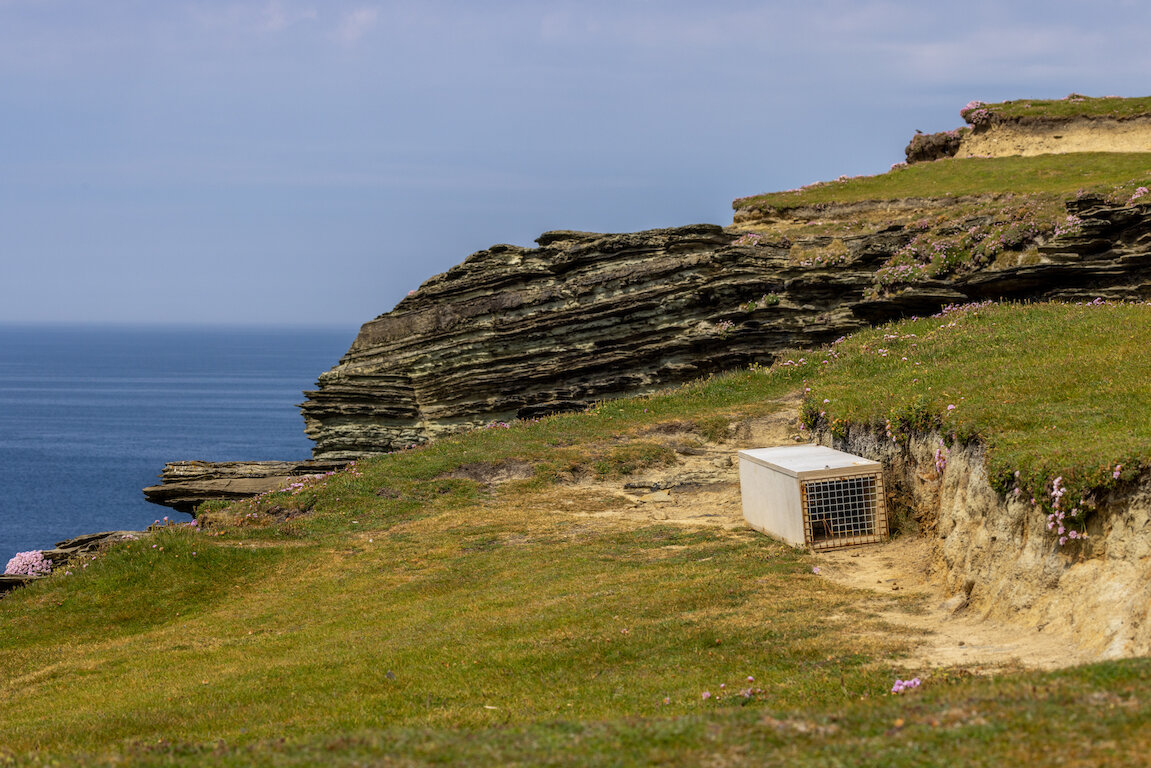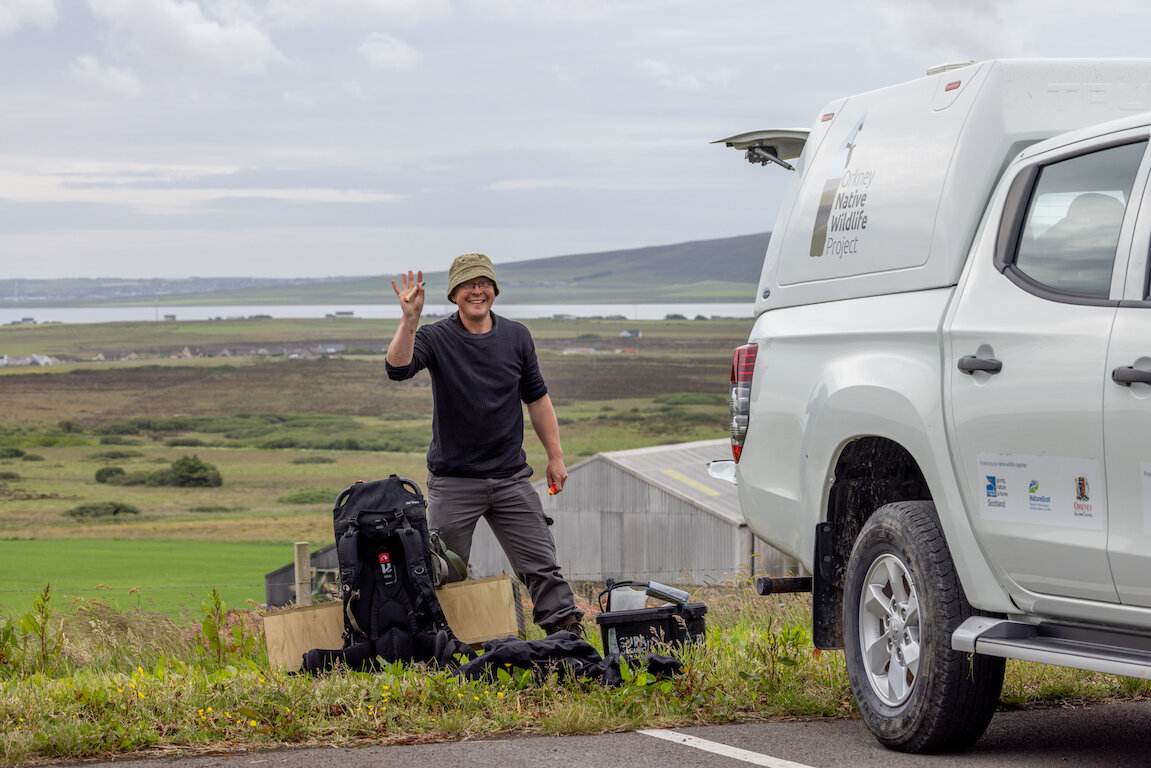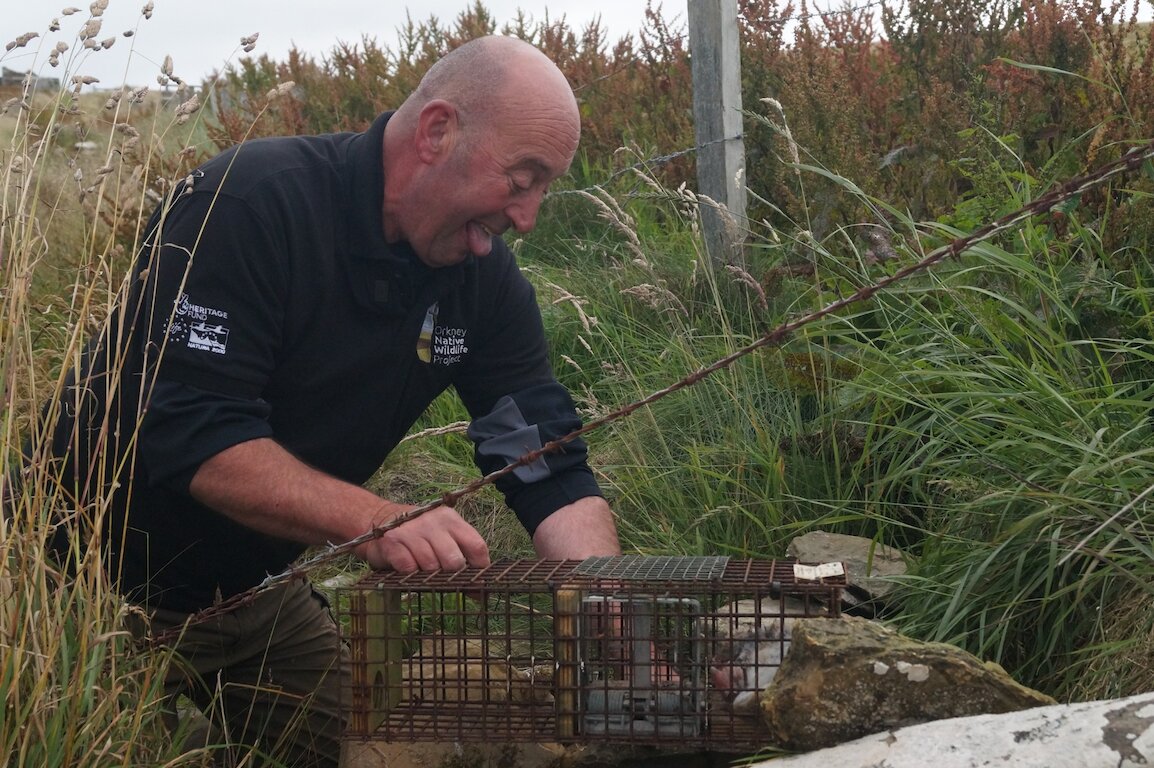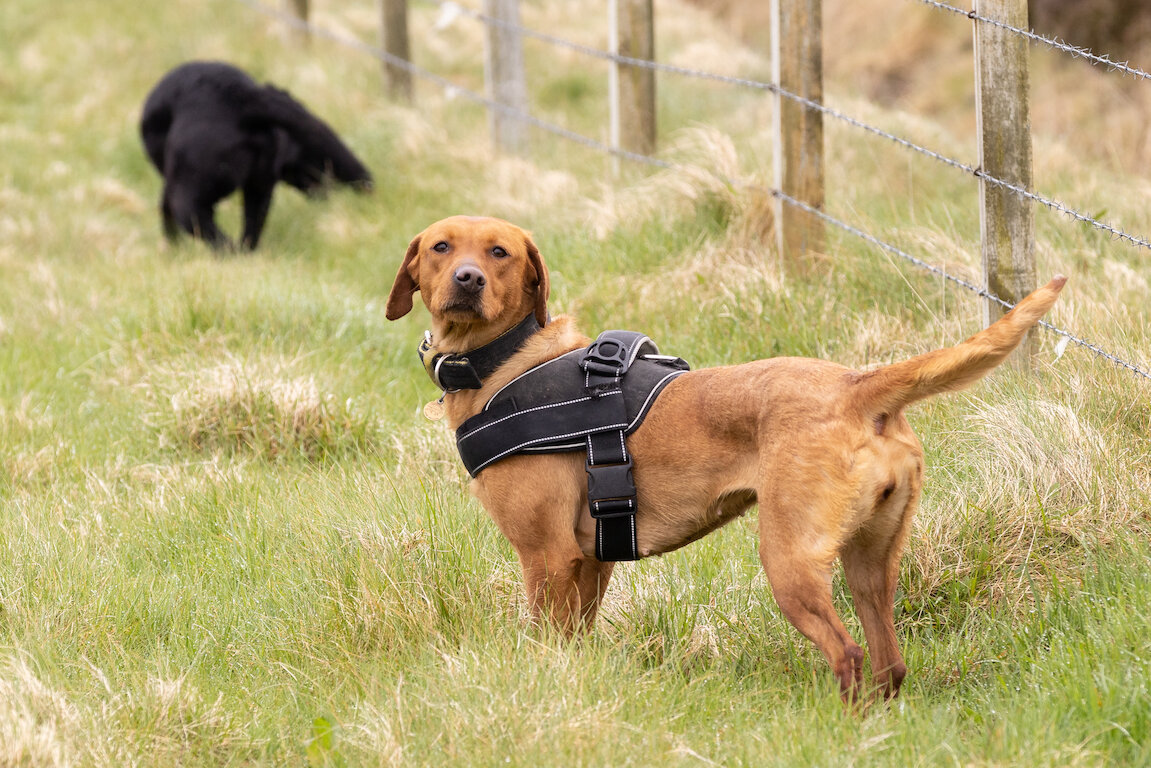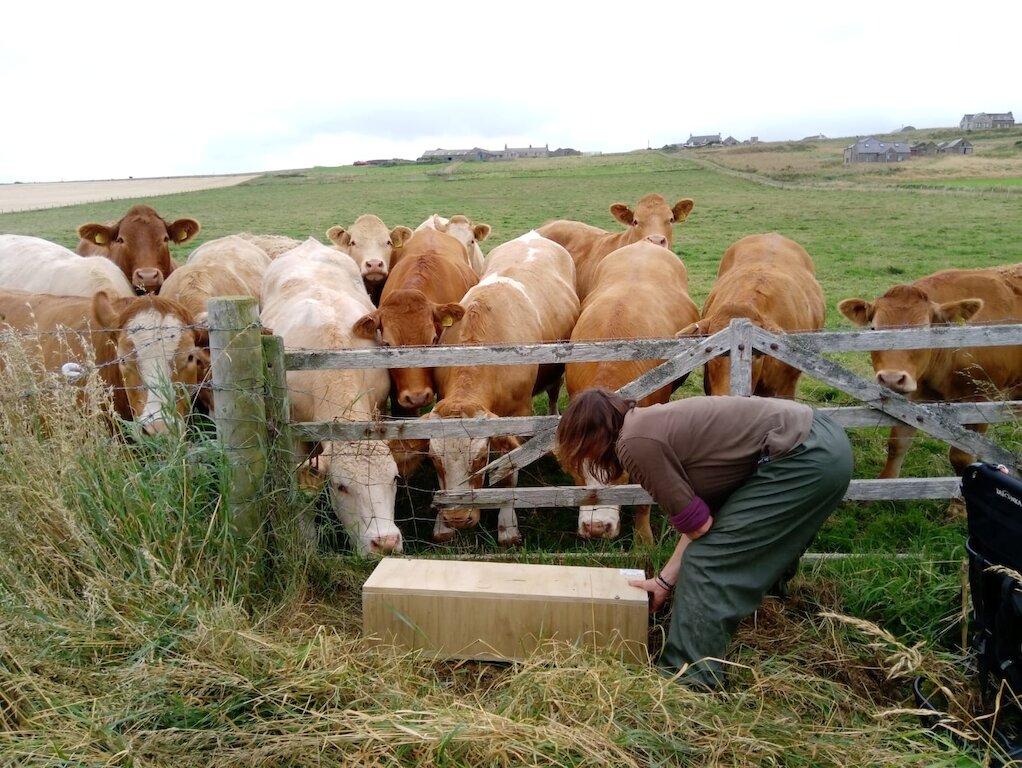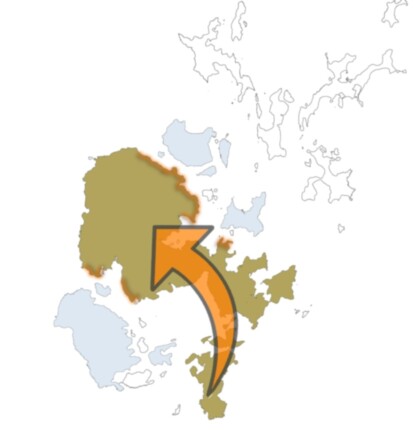Stoat-Free by 2030
Eradicating stoats means not just reducing their numbers but removing every last one, returning the islands to their natural stoat-free status. Thanks to a huge community effort, a stoat-free Orkney is possible and within reach. To achive total eradication, we are working through three phases:
The team
The eradication team is responsible for trapping stoats on the Orkney Mainland and the linked isles by deploying traps in an eradication network, checking and maintaining the network, and then, at the end, ensuring that all traps are removed.

The trappers work closely with the stoat detection dog team to pinpoint and remove stoat hotspots. This coordination is known as ‘response trapping’, and supplements the static trap network. Response trapping means responding to dog detections and public sightings with targeted trapping. The dogs locate the scent or sign of stoats, they do not to hunt them.
The traps
The project uses DOC200 and DOC150 humane lethal traps to remove stoats from Orkney. These traps are legal for use in Scotland and reach the welfare standards defined by the Agreement on International Humane Trapping Standards (AIHTS). The majority of these are DOC200 spring traps, but
Most of the traps used by the project are DOC200s. The DOC200, and slightly smaller DOC150, traps are housed in specially designed trap boxes which ensure the traps are humane and minimise the chance of catching animals that aren’t stoats. The project uses two types of trap box that house either two traps (double-set) or one trap (single-set).
The network
The trap network for the first phase of the eradication involves around 8,000 trap boxes deployed across the Orkney Mainland, South Ronaldsay and the linked isles. Roughly 80% of these trap boxes contain two DOC200 traps and the rest a single trap.
Trap deployment
The eradication trap network was deployed and opened in stages starting with South Ronaldsay and the Linked Isles, followed by protected areas in West Mainland and across East Mainland. The traps on South Ronaldsay were then opened.
Once work could resume following the COVID pandemic, the East Mainland traps were opened, and traps were deployed at pace on West Mainland. The full trap network has proved effective at reducing the number of stoats to a point where staff can respond to individual sightings across the whole of the eradication zone.
Trap checks
Once deployment is completed in a specific area, the traps are assigned to a route, baited and opened for the first time.
Traps on routes with relatively high catch rates and sign/sighting reports will be checked on a 3-4 week schedule, sometimes more frequently. Low priority areas are checked on a 6-8 week schedule as they are less likely to need clearing. We tend to use longer life bait in these traps. This schedule is in line with other large trapping networks internationally.
During each check, the trap boxes are opened and the traps are emptied, cleaned, maintained, rebaited, reset and the boxes closed. Response traps - which are deployed on the basis of public sightings and detection dog indications - are checked more regularly.
Want to get involved?
Get in touch to find out more about adding your support by allowing trapping on your land or how to join the trapping team as a volunteer.
Offer land access Volunteer with us



